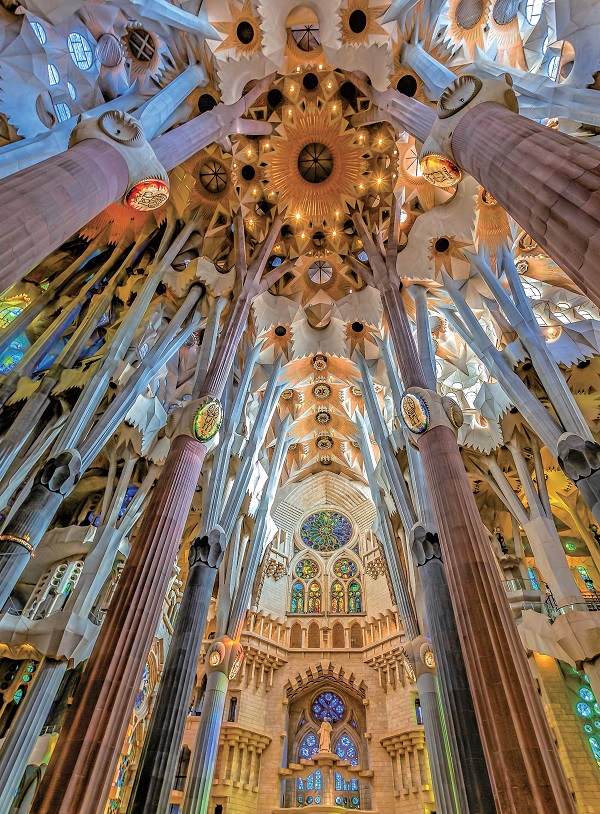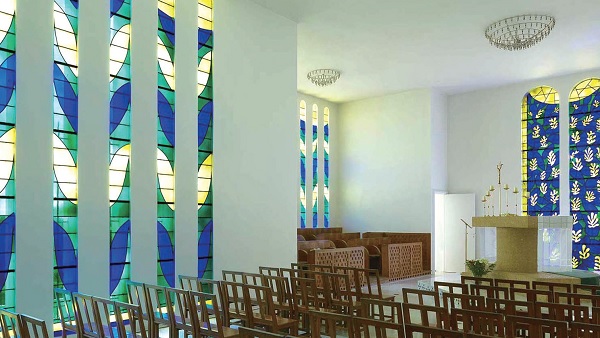Beauty can make people forget clumsiness

▲The Sagrada Familia designed by "God's Architect" Gaudí shows the majestic momentum of the Lord's visit to all nations.
Architecture is frozen music. Obviously, Notre Dame in Paris is a favorite melody of many artists. Whether it is the Impressionist Claude Monet or the Fauvist Henri Matisse, they all like to paint Notre Dame into their paintings. The great writer Hugo was no less generous, and the famous novel "The Hunchback of Notre Dame" is also set here. This iconic Gothic building, located in the center of Paris, has long attracted countless tourists. The most profound memory of my visit that year was the large round colorful rose glass window that told her touching story under the light... For those who are familiar with Bible stories, connecting people and things can touch their hearts and create dialogues with them!
It is said that the grade of a church is measured by its stained glass windows. Because the production process of stained glass windows is very labor-intensive and time-consuming, with high material and technical requirements, talent and money need to be taken into consideration, and both are indispensable.
The walls composed of stained glass windows create a clever balance in the majestic space of the church. The main building materials will not appear heavy, and then they will be translucent and colorful, which is dazzling. This kind of beauty can make people forget their clumsiness; this kind of beauty can make people immersed in magnificence and solemnity at the same time.
Because there is light, we can see.

▲Matisse used three colors of yellow, green and blue to express the situation of being on earth as if he were in heaven through the tension of purity and tranquility.
(https://images.app.goo.gl/wDSsfr4PgipFp3Ga7)
To see the ingenuity of stained glass windows, of course you have to go to La Sagrada Familia in Barcelona. Sagrada Familia was built by Anthony. Designed by Antoni Gaudí, construction started in 1882 and is expected to be completed in 2026. He took over the project in 1883 and spent the next 43 years building the Sagrada Familia. Someone asked "God's Architect" Gaudi, why did it take so long to build? He replied: "My client (God) is not in a hurry, so why should I be in a hurry?"
He used colorful glass to represent the sign of the covenant, and used hyperbolic parabolas on the vault to concentrate the light to create the ultimate light source, showing the majestic momentum of the Lord's visit to all nations! Gaudí was romantic and childlike, with unbridled creativity. No wonder the architect Ieoh Ming Pei said: "I am an architect, but Gaudí is an artist."
After walking through the majestic churches in Barcelona, we returned to Vence, France, where we introduced another artist, Matisse, the founder of Fauvism. In his later years, Matisse kindly sponsored a nun and designed a "Chapelle du Rosaire de Vence" (Chapelle du Rosaire de Vence) that was very modest in form and area.
it's here,The artist's wish is to express a situation where the earth is as if it is in the sky. Matisse used three colors as the main colors of the stained glass windows: yellow represents the sun; green symbolizes plants and represents life; blue represents the blue sky of the Mediterranean. It seems simple against the background of white walls, but it fills this space that combines art and spirit with a profound tension of purity and tranquility! An art critic said it well: "As long as you stand here, that window can deny all dark things."
God’s beauty deserves our heart’s response. Whether it is breathtaking natural landscapes, art, or design, they are all made by God or by people who have the image of God. When you admire these works, you must find the source of worship in them...
Because no matter how wonderful the stained glass is, if there is no light, nothing can be seen!
 Chris L. Chou,painter. Make good use of colors and personal symbols to tell life stories with God, people, and nature. Won the Guggenheim Painting Award (Guggenheim Fellow 2007), Houston, Texas, USA designated 4/26/2008 as "Zhou Lanhui Day".
Chris L. Chou,painter. Make good use of colors and personal symbols to tell life stories with God, people, and nature. Won the Guggenheim Painting Award (Guggenheim Fellow 2007), Houston, Texas, USA designated 4/26/2008 as "Zhou Lanhui Day".
